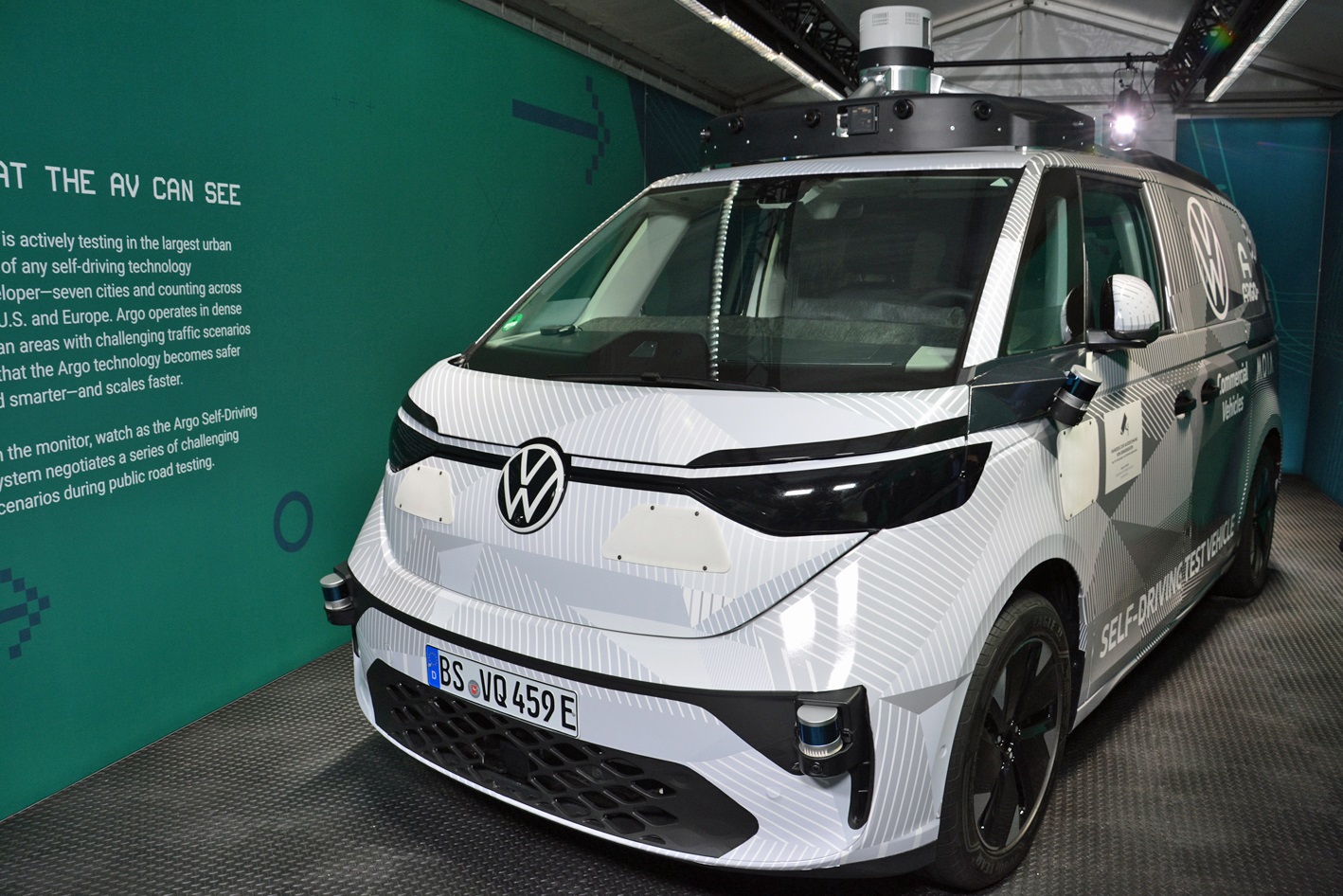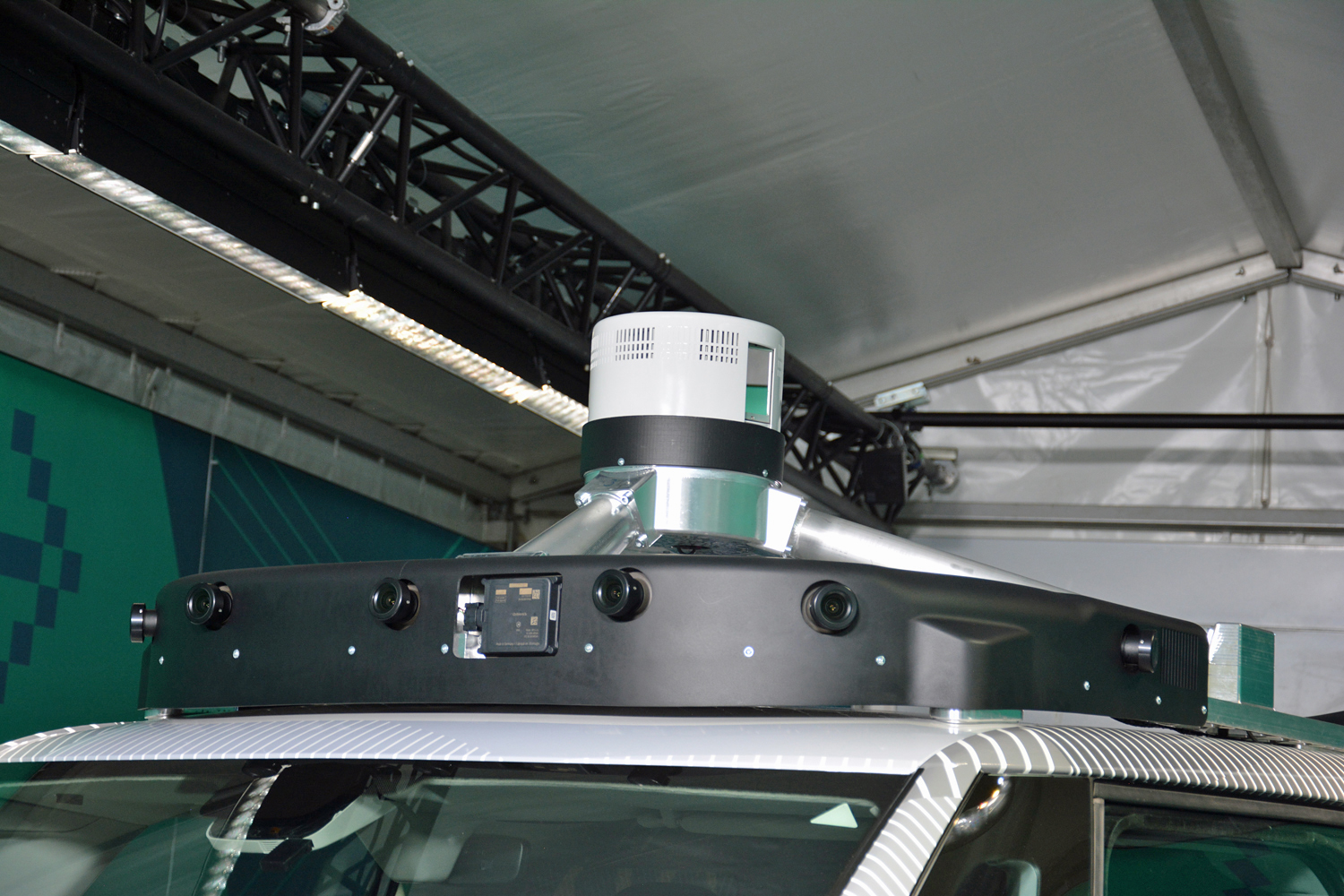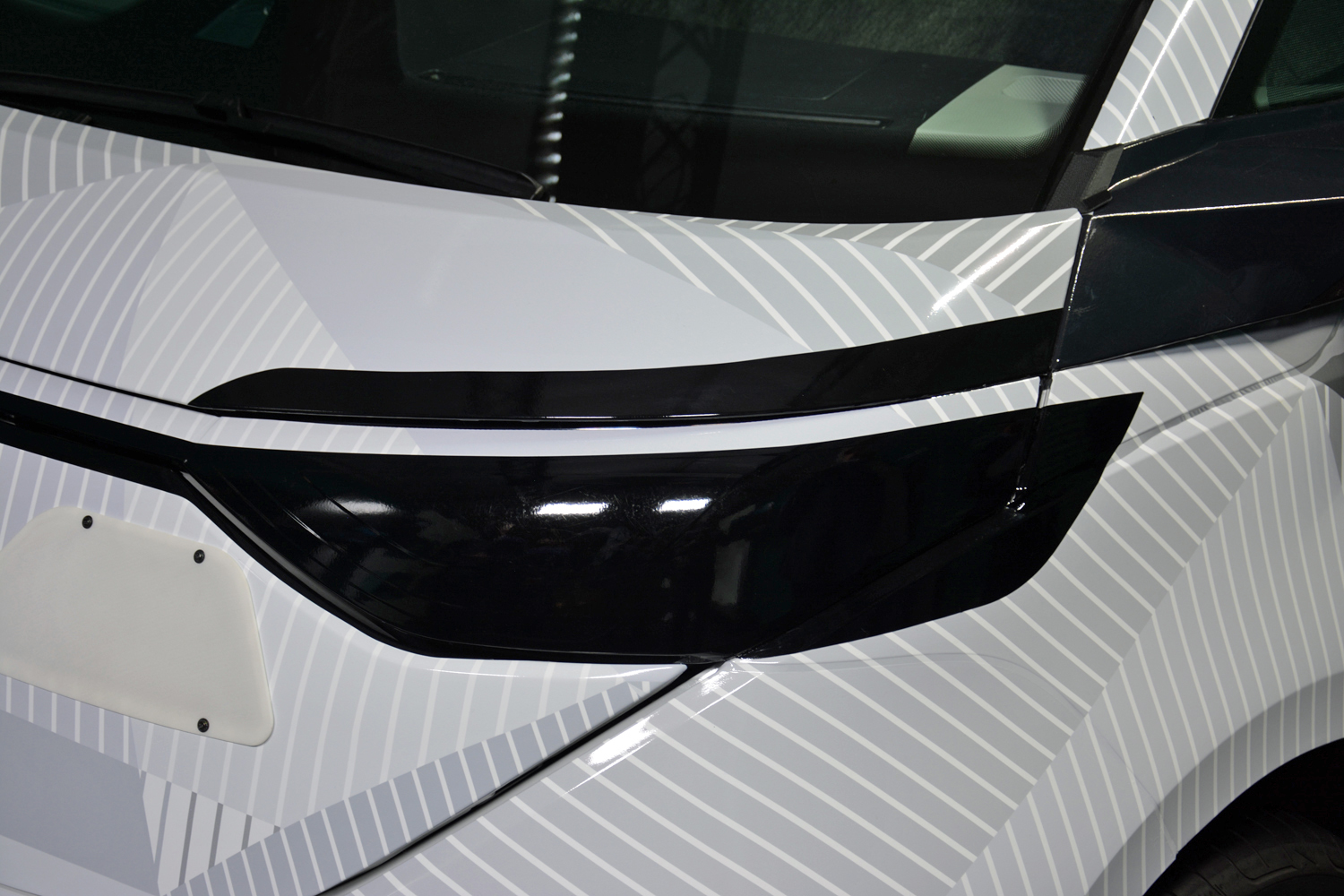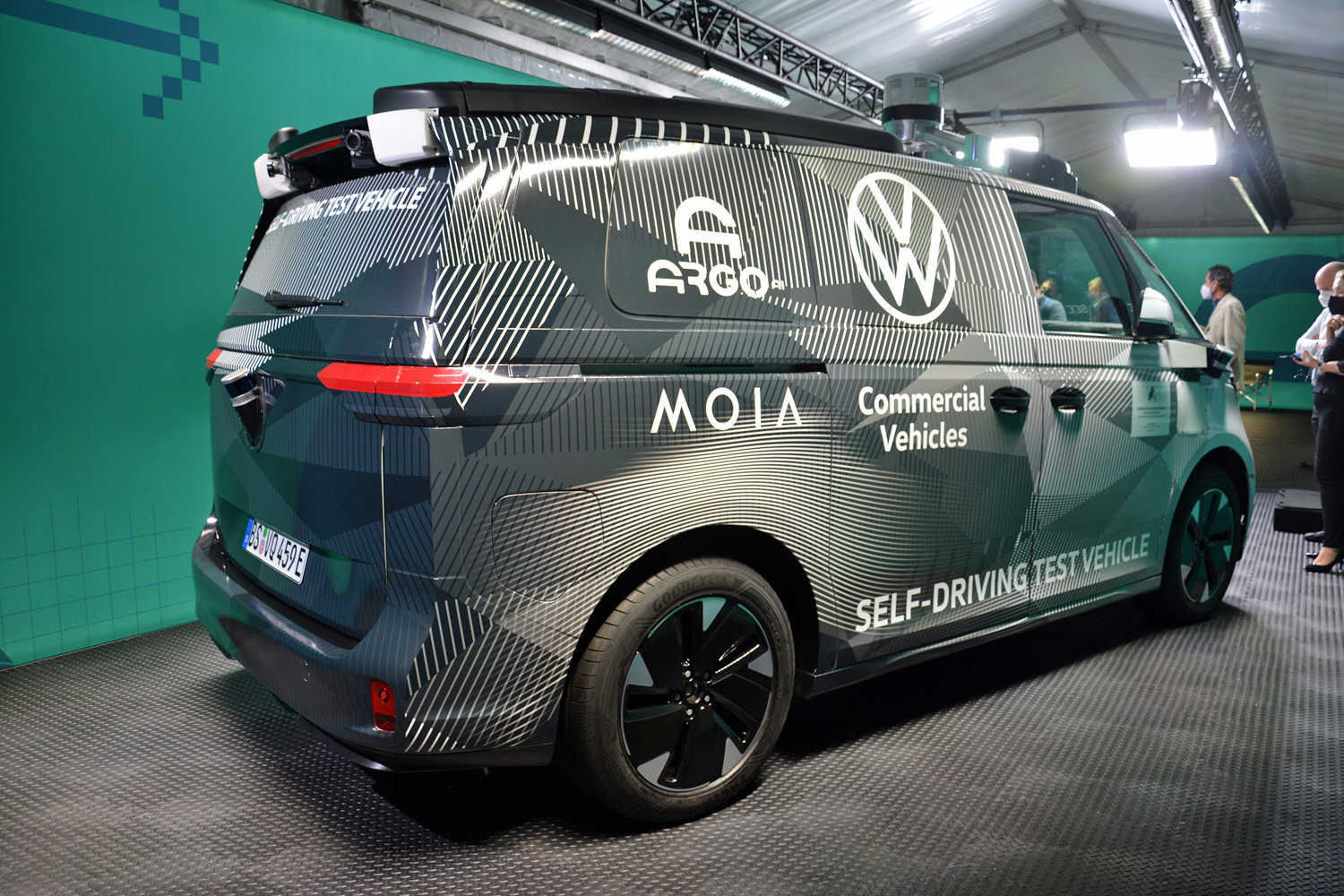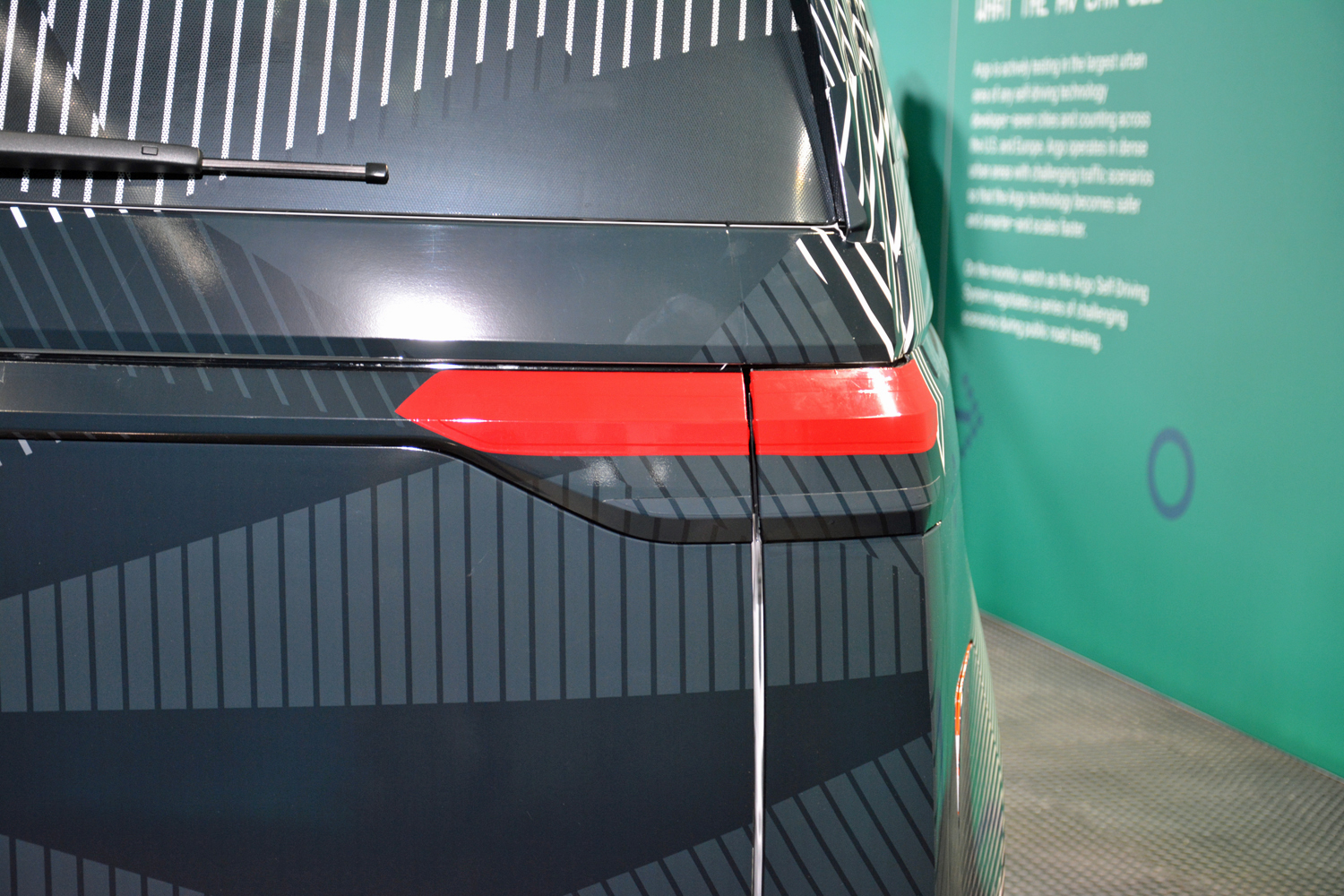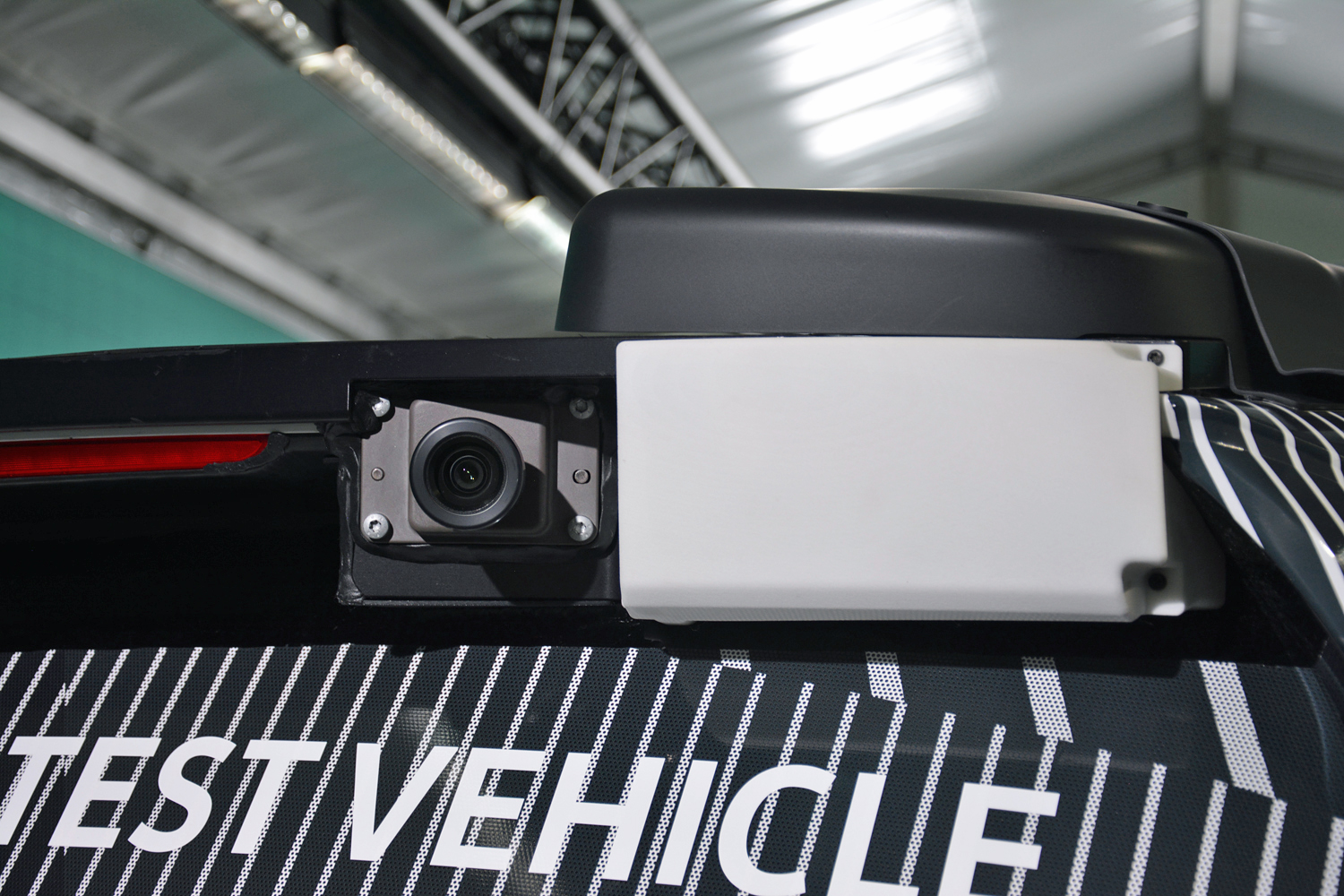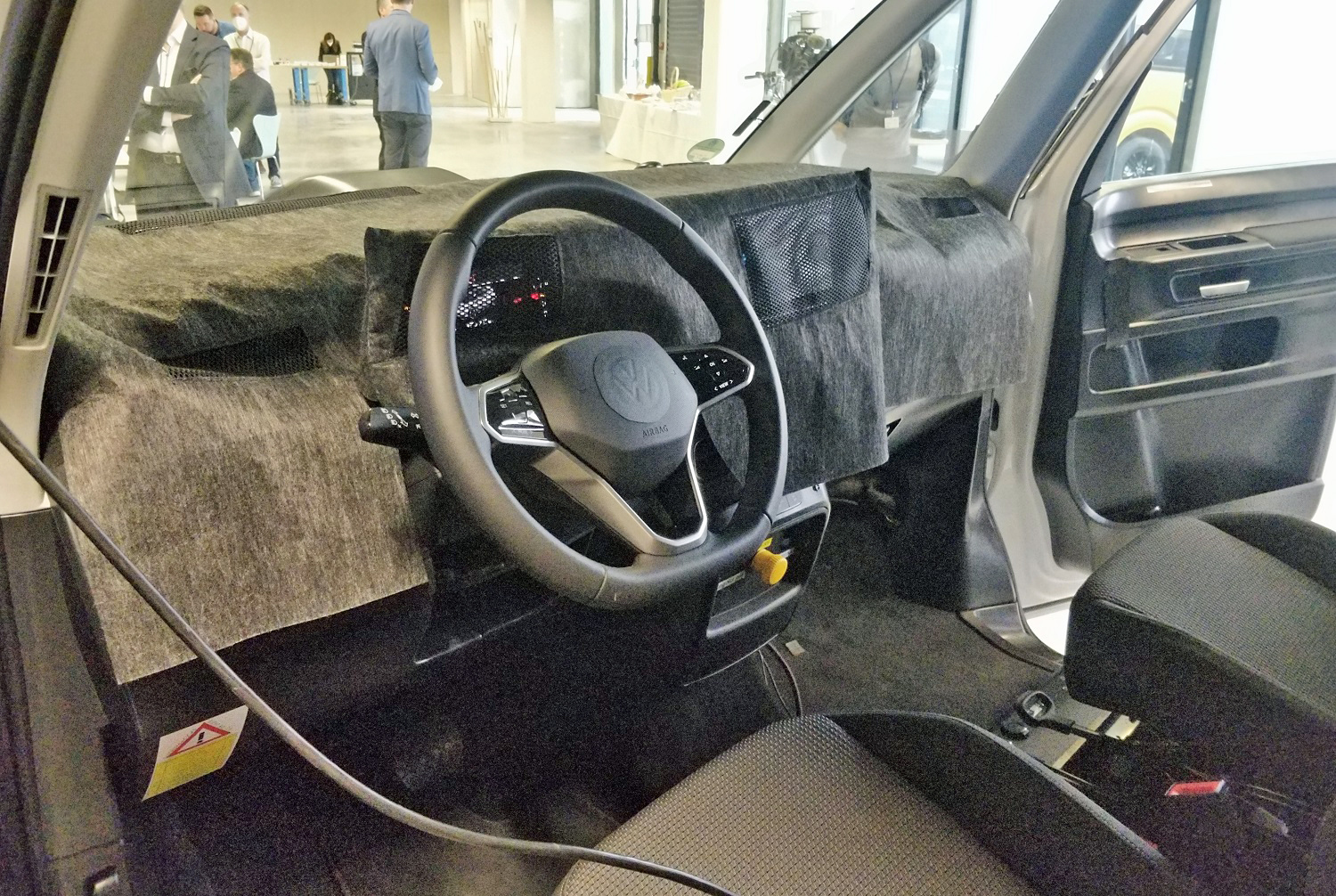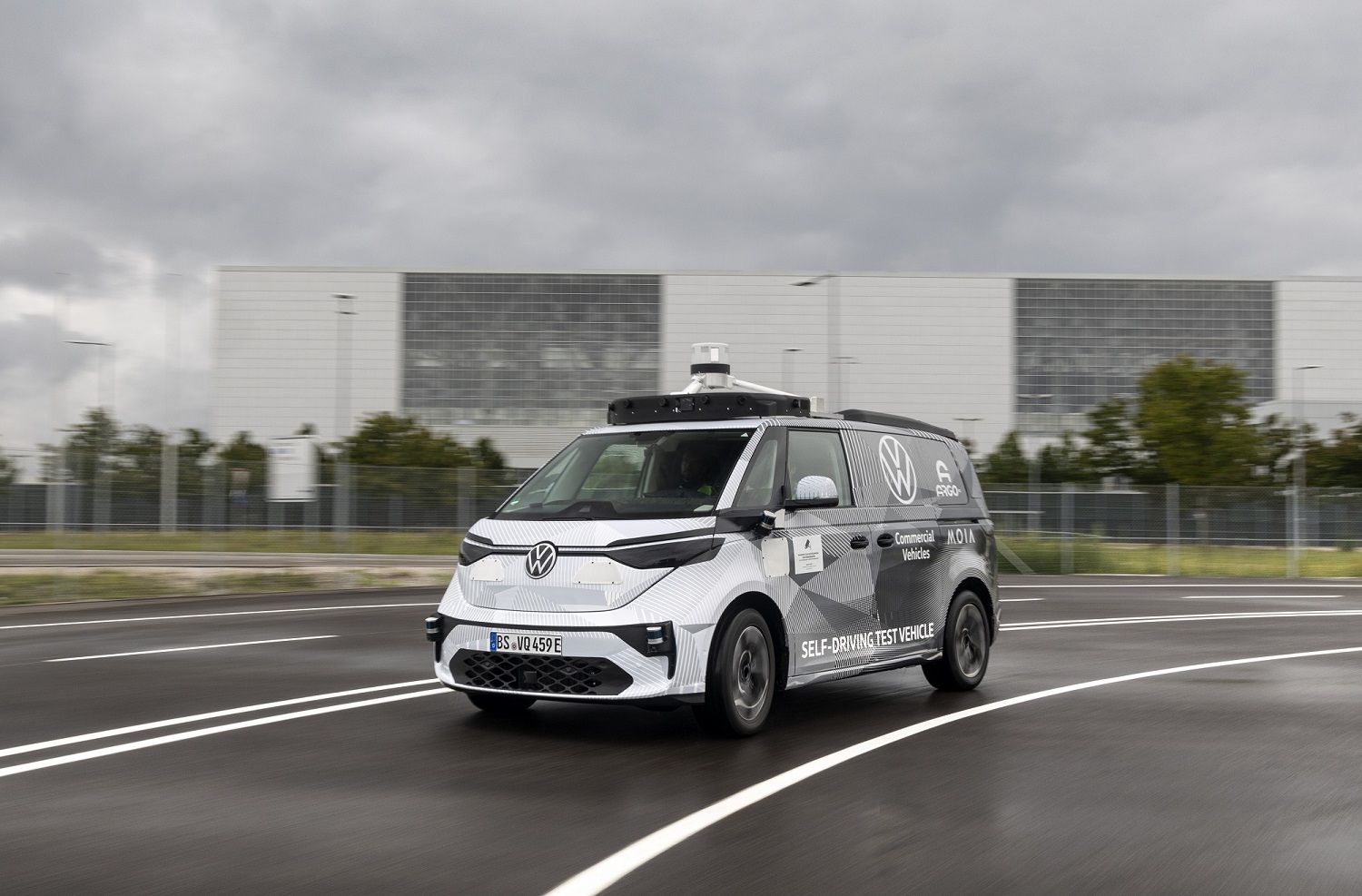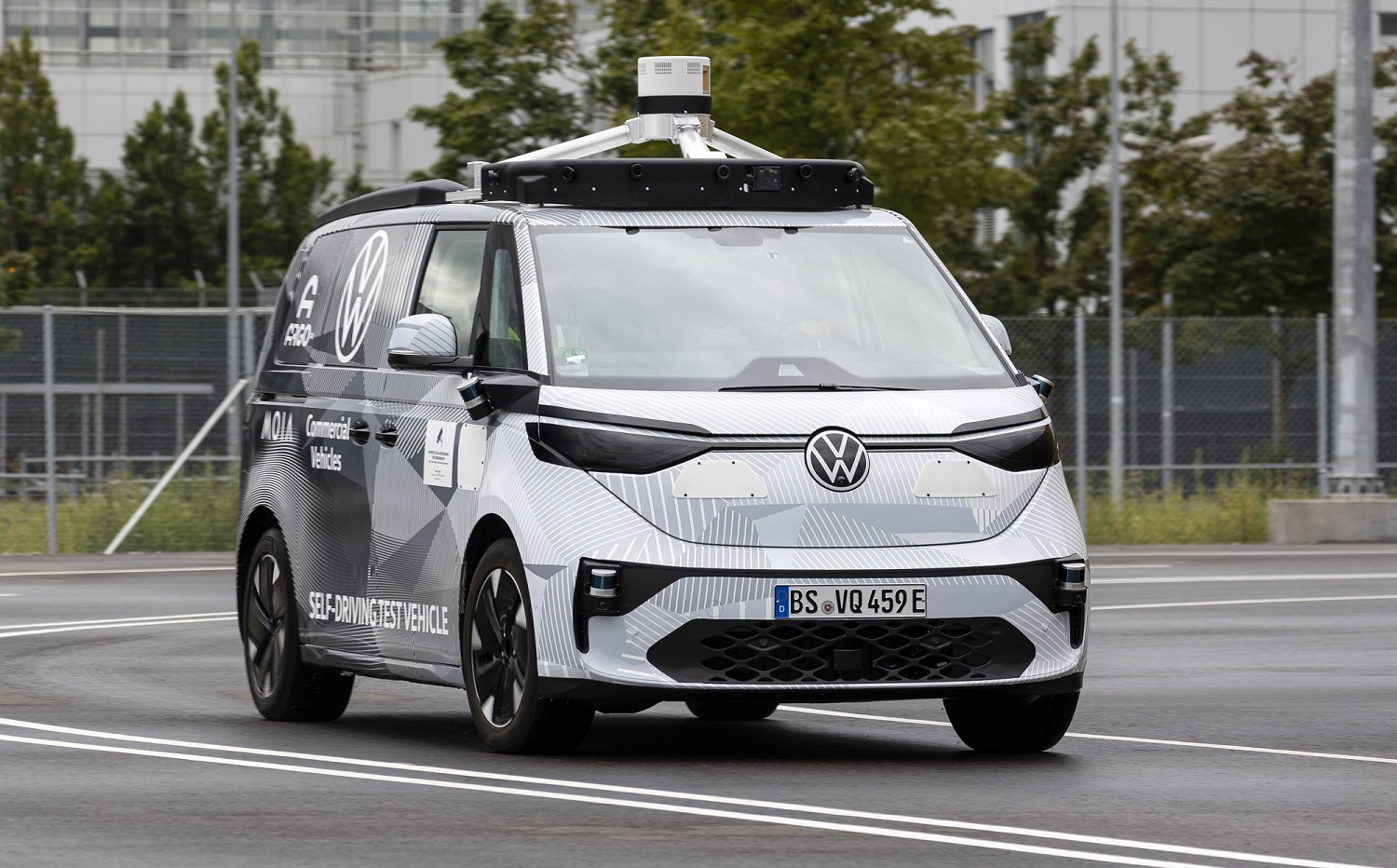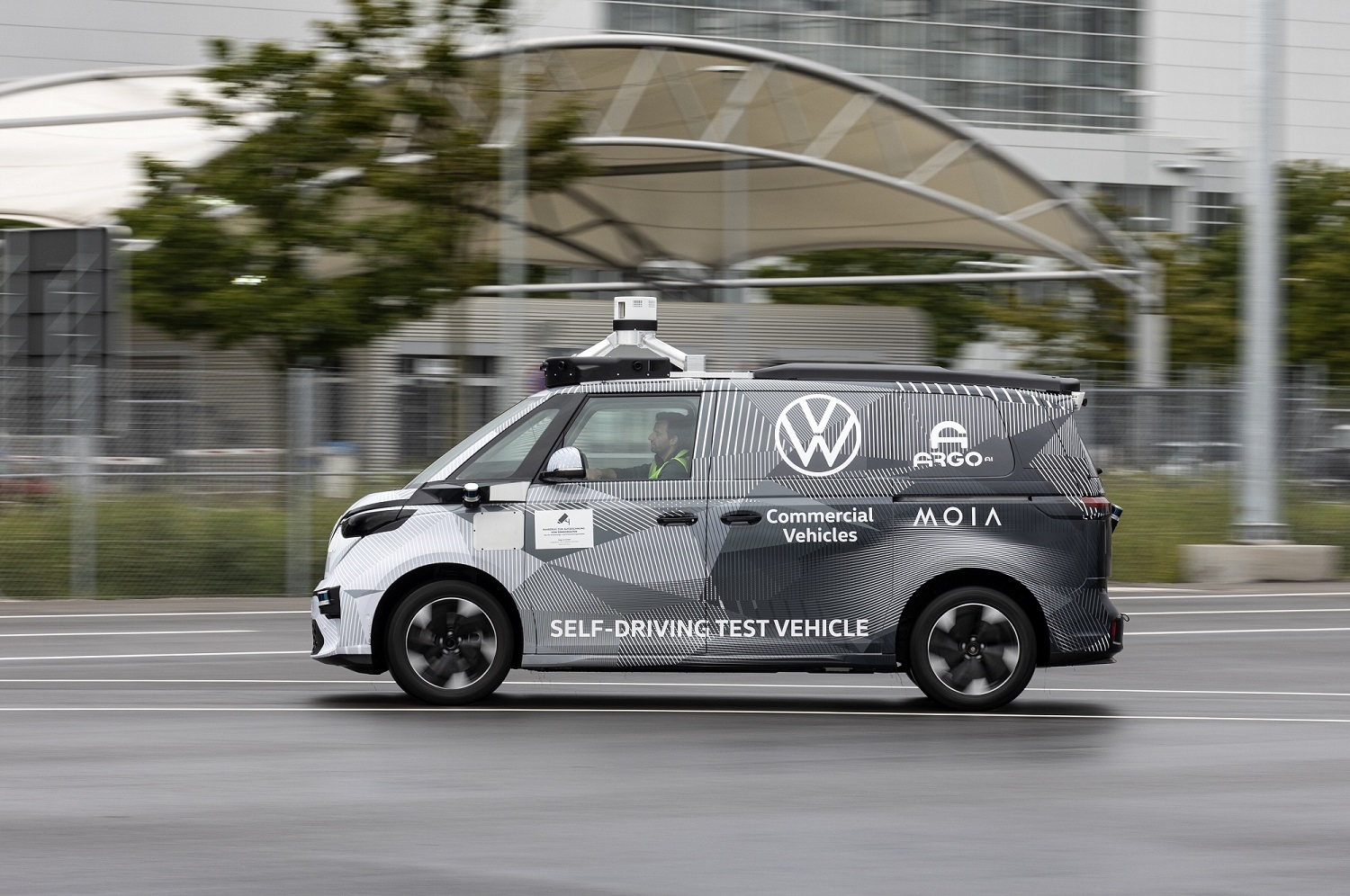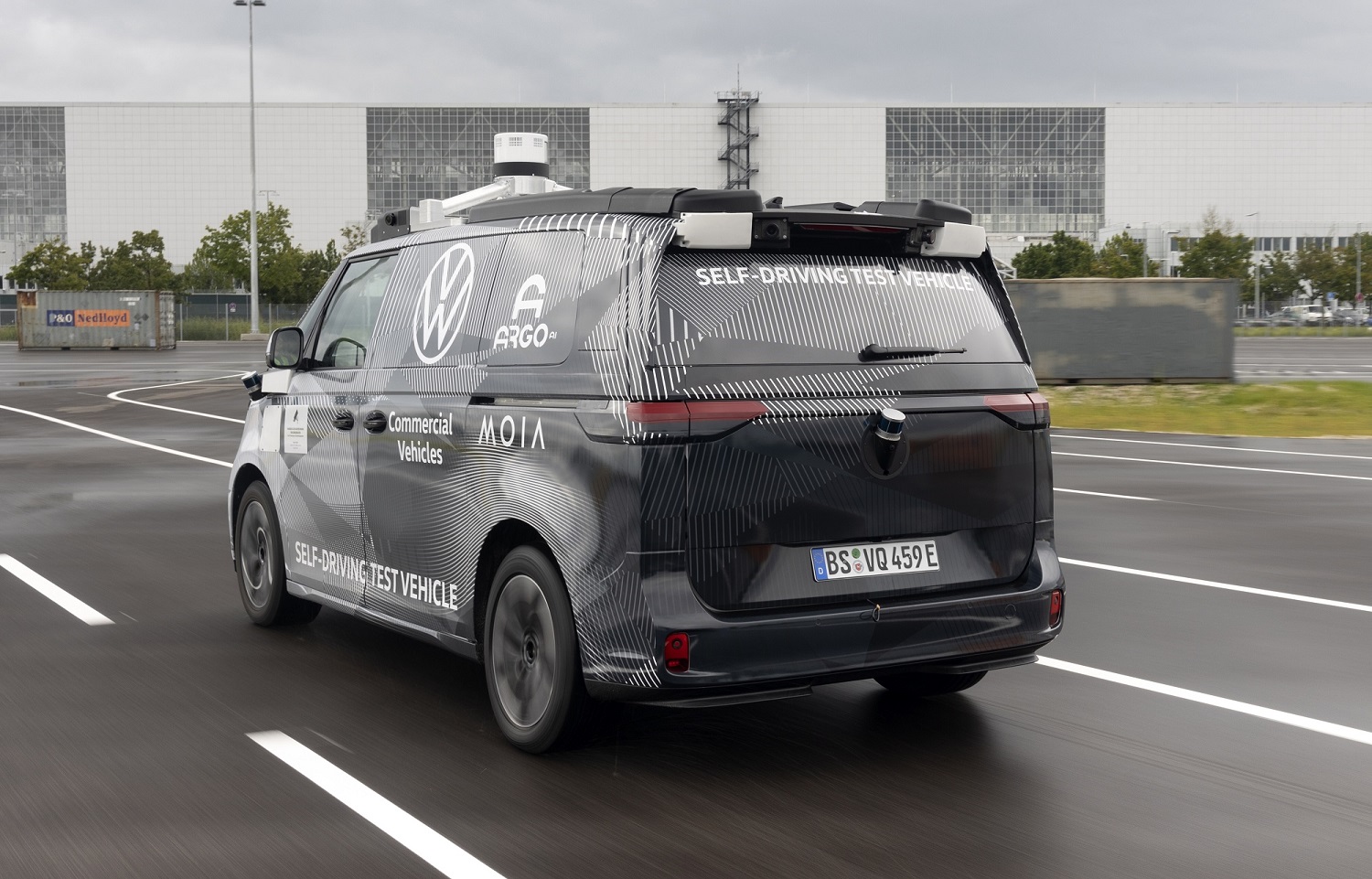Previewed by the heritage-laced ID.Buzz concept, Volkswagen’s born-again Bus will arrive in 2022 with a few cool tech tricks up its sleeve. It will be fully electric, it will ride on the MEB architecture already found under the EVs like the ID.3 and the ID.4, and it will spawn an autonomous shuttle scheduled to start carrying passengers in 2025. Argo A.I. is helping Volkswagen teach the Bus how to drive itself, and Digital Trends got an inside look at the project.
Volkswagen unveiled the first ID.Buzz-based prototype on the sidelines of the 2021 Munich auto show. Fully draped in camouflage to mask its final design, the van is fitted with an armada of sensors, radars, cameras, microphones, and lidars that paint a digital picture of the world around it. Argo A.I. — which Volkswagen and Ford jointly own a stake in — argues its technology is highly advanced: its lidar can detect and avoid potholes by scanning the road surface, and it can see objects that are about 1,300 feet away, even if they’re dark (like a black car). Powering this hardware requires tremendous computing power, several backup systems, and a mammoth amount of data.

Argo A.I. operates two test tracks. One is in Pennsylvania, where the company is based, and the second is near the Munich airport in Germany. On these closed, private properties, engineers push prototypes to the limit in a wide variety of conditions including tight bends with reduced visibility and flooded roads. Fake animals and pedestrians are pushed in a car’s way to see how it reacts, while fog generators do their best to confuse the sensors. Argo’s main goal is safety. Its technology needs to operate in cities, rural areas, at night, in stormy weather, and so on. In turn, the data gathered through testing improves the software. The more situations it encounters, the better it drives.
“We have a clear idea: it’s not about getting the world’s largest data set, it’s about getting the world’s most complete data set to ‘feed’ the system,” Argo A.I. founder and CEO Bryan Salesky said during a presentation.
One fascinating part of developing autonomous technology for global applications is that the software needs to be tweaked for specific regions. For example, motorists in Paris have different driving habits than those in Miami, and the car needs to adapt to its surroundings; it’s not the other way around, and there is no one-size-fits-all solution.
Road rage is not part of a self-driving car’s training.
“Our basic algorithm is the same, and then we adapt it to the natural driving behavior of motorists in each city. Washington, D.C., has a lot of roundabouts, and we have already learned that there and that gives us a head start when we come to European cities,” noted Reinhard Stolle, the vice president of engineering for Argo AI.
That doesn’t mean Volkswagen’s autonomous prototypes will pick up each city’s bad habits, such as speeding, double-parking, or incessant honking. Road rage is not part of a self-driving car’s training. They’re not programmed to use their horn, they avoid sudden maneuvers, and they drive at exactly the speed limit — for better or worse.
“We know that a vehicle which follows all of the rules, especially speeding, is not really liked in general traffic [in Germany]. For now, in the first stage, it’s mandatory to do this. What happens afterwards, when we really know the technology is mature, we’ll see. Exceptions might be perhaps possible,” said Stolle cautiously.
“Our sensor set looks impressive, but from a business standpoint it’s much cheaper than a driver.”
Until then, Argo A.I. will continue testing its technology on the track and on the road to gather more data. It currently tests cars in six American cities, and it plans to begin rolling out prototypes on the streets of Munich in the coming months. When the testing phase is complete, Volkswagen and Argo A.I. will work together to make autonomous vans available in Hamburg, Germany, starting in 2025. Other cities will presumably follow later in the decade.
Autonomous technology remains expensive, but riding in a self-driving shuttle may be cheaper than hailing an Uber.
“Our sensor set looks impressive, but from a business standpoint it’s much cheaper than a driver,” explained Robert Henrich, the CEO of Volkswagen-owned Moia (a division formed in 2016 to provide mobility services like ride-sharing). He added that an autonomous shuttle doesn’t need to take breaks (unless it’s charging) and can operate around the clock if needed. “The business case improves significantly once we replace the driver — human drivers are rather inefficient in comparison. We expect prices will go down significantly for the end customer,” he added.
While this all sounds promising, self-driving shuttles still have many hurdles to clear before they can merge into the mainstream. The technology still needs to be perfected, infrastructure improvements are needed, and a regulatory framework that allows autonomous cars to share the roads with human-driven vehicles has to be put in place. On the topic of technology, it’s not just the hardware and the software that allows a car to drive itself that needs work. The companies hoping to deploy fleets of autonomous shuttles also need to figure out how to monitor what happens during a ride and respond in an appropriate and timely manner. What if a rider has a heart attack?
“We will have interior cameras, we’ll do interior surveillance, and we’ll rely on artificial intelligence. During the ride, we’re monitoring what each passenger does, and if there is an emergency the remote operator can connect to the vehicle via a video connection and sort it out. If necessary, the vehicle will stop,” Henrich noted. One advantage of autonomous shuttles is that hitching a ride will require creating a profile with personal information — just like you had to provide basic information about yourself before signing up for Uber. In theory, this helps ensure that riders remain courteous. In application, the issue is far more complex, and it’s one of the gray areas still being worked on.
Carrying passengers is only one part of the equation. Scale is hugely important in the realm of autonomous cars, and the technology platform that Volkswagen and Argo A.I. are developing will also power vehicles that deliver goods. It sounds like the next Volkswagen Bus will pick up right where its predecessor left off — with a high-tech twist.
